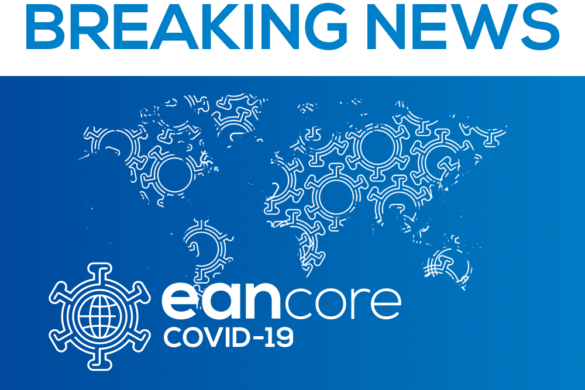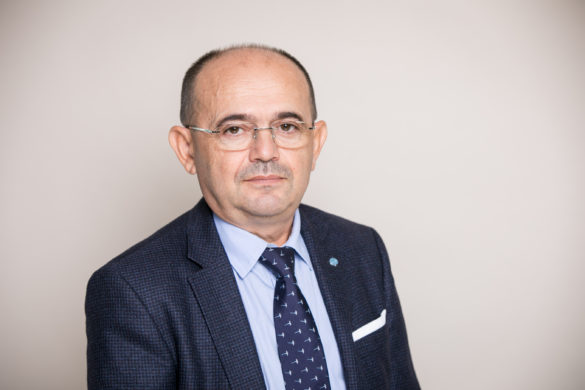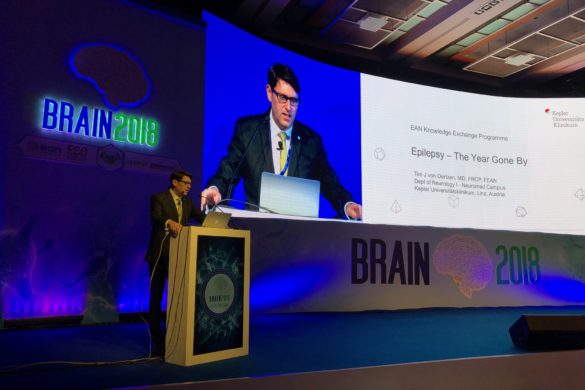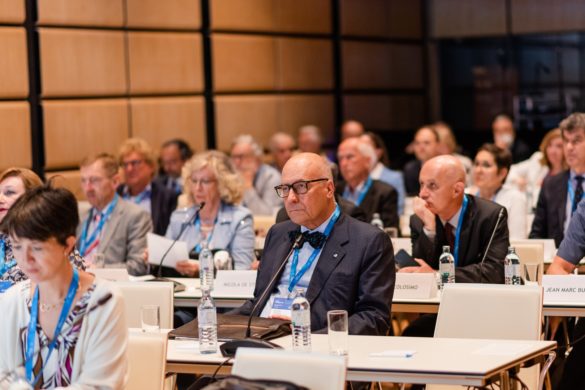Overarching Theme: Molecular and genetic therapies for neurogenetic disorders
18 June 2018
By Tom Jenkins
This plenary session focused on perhaps the most exciting area of clinical neurology in recent years, at least in terms of therapeutic breakthroughs and new proofs of concept. 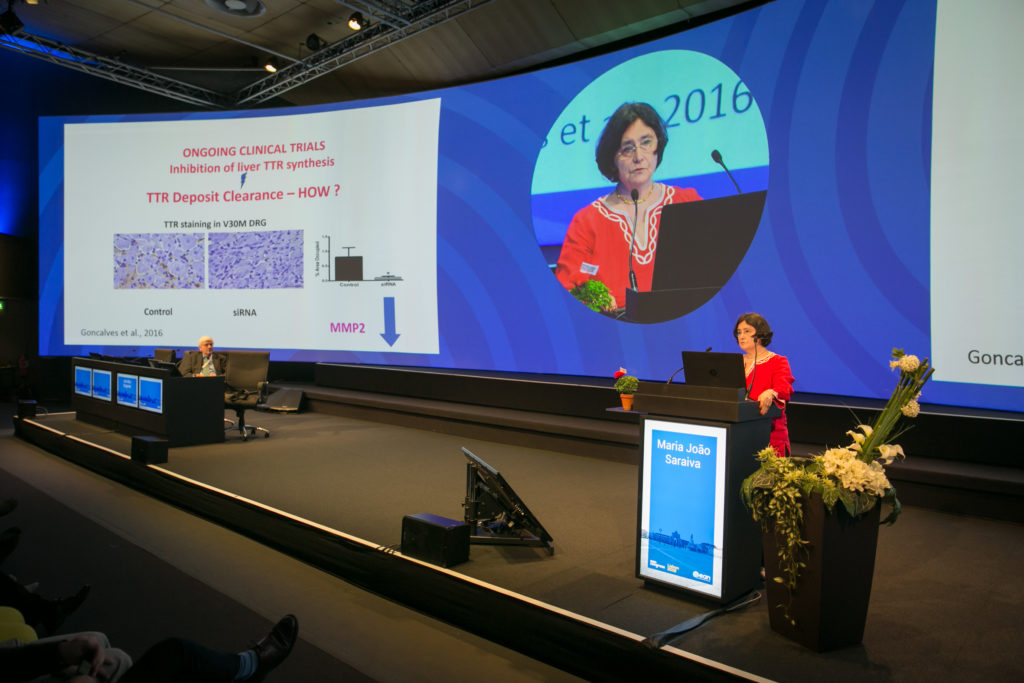
The session began with Prof. Massimo Pandolfo discussing the state of the art in Freidreich’s ataxia (FRDA) research. In FRDA, a repeat expansion (from around 20 repeats in health to around 500) in intron 1 of the FXN gene results in reduced expression of frataxin protein. Frataxin is important in iron-sulphur clustering and influences mitochondrial function. Importantly, FRDA carriers with 50-60% frataxin levels of controls have no disease phenotype, compared with clinical manifestations that occur with frataxin levels of less than 30% in homozygotes (and less than 10% in severe cases with early onset). This opens a potential therapeutic avenue because a relatively modest increase in frataxin levels could conceivably prevent the multisystemic damage that occurs. FRDA is an epigenetic disease in that acetylation of histone is important in determining whether frataxin is expressed. Histone deacetylation (HDAC) inhibitors have therefore been applied in mouse models, and with encouraging results. A second approach is gene therapy to replace the faulty gene itself, using AAV9 viral vectors. It is anticipated that clinical trials will start soon; outcome measures such as the SARA score will be important.
Prof. Kevin Talbot then gave a masterclass on recent therapeutic developments in spinal muscular atrophy, describing a wonderful initial success story that opens new horizons of opportunity in treatment of genetic disease, but also poses new challenges. SMN protein is essential to life and its absence is universally fatal. Due to a random historical duplication event, humans have two forms of SMN, SMN1 and SMN2. In health, SMN1 produces most of the active protein. SMN2 transcripts produce a truncated, partially active form of the protein but, in SMA, homozygous deletions in the SMN1 gene on chromosome 5 mean that the patient is reliant on SMN2 protein. This chromosomal region is unstable and SMN2 copy number varies between individuals; greater copy number results in production of larger amounts of SMN protein and a correspondingly milder disease phenotype. SMN is graded clinically from SMA0 (the most severe form, characterized by death in utero or peri-natally, importantly indicating that lack of SMN protein has effects prior to birth), SMA1 (these infants never reach motor milestones and death occurs age 1-2 years), SMA2 (these children never walk, but live to 4th or 5th decade), SMA3 (these people learn to walk, but lose this ability with disease progression; life expectancy is normal) and SMA4 (late onset milder form). The SMN gene is involved in gene splicing, although the precise details are still debated. A novel therapy, Nusinersen, an anti-sense oligonucleotide, binds to a splicing silencing site on intron 7 of the SMN2 gene, inhibiting production of pre-mRNA that usually inhibits splicing, and was trialled in infants with SMA1. The results were startling. The children survived and started passing motor milestones, including walking, which was completely unprecedented. The sham control study had to be stopped early. Further analysis showed that all babies younger than 12 weeks responded to treatment, but the effect was not as strong in older infants. A subsequent study of pre-symptomatic babies showed 100% effectiveness in infants who had three copies of the SMN2 gene, but only 25% efficacy in babies with two copies. It appears that SMN protein replacement is more effective the earlier it is given, is critical even in utero, and raises questions about whether pre-natal screening may be indicated. Intravenous treatment options and direct AAV9 gene therapies seeking to replace the faulty SMN1 gene are now also being developed. Costs are considerable at $750K for the first year and $375 per annum thereafter indefinitely. For the reasons discussed above, the role in later onset forms of SMA remains to be elucidated.
Prof. Maria Saraiva then took us through the history of familial amyloidosis, which was first described in Portugal by Corino de Andrada in 1952. This disease, which commonly presents with a peripheral neuropathy, differs from the targets discussed by the previous two speakers in that it is far more genetically heterogeneous, with more than 120 mutations identified to date in the transthyretin gene. Transthyretin is produced in the liver and choroid plexus, functions as a transport protein for thyroxine and retinol, and also has roles in neurogenesis, neuropeptide amidation and proteolysis, including degradation of amyloid. Perhaps not surprisingly, therapeutics are more complex and require a multi-faceted approach, with gene editing, interfering RNAs and interleukin-1 antagonists showing encouraging results in mouse models.
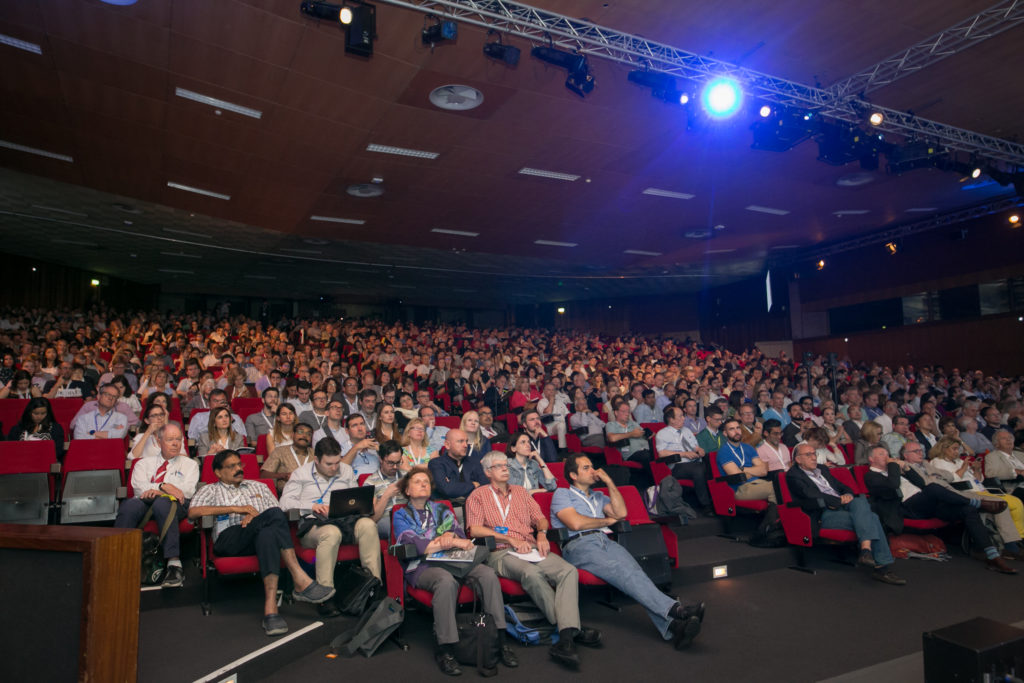 Lastly, Prof. Jean-Marc Burgunder discussed advances in Huntington’s disease, a well-defined CAG repeat disorder. In this condition, reducing mRNA expression, and therefore levels of huntingtin protein, ameliorates the disease process in mice. An early, first-in-man, dose ascending study showed that intrathecal delivery of an anti-sense oligonucleotide was safe and well tolerated and, whilst the exploratory outcome measure of change in composite clinical scores was not met, there were some encouraging data in regard to improving motor and cognitive sub-scores. A larger global study is underway.
Lastly, Prof. Jean-Marc Burgunder discussed advances in Huntington’s disease, a well-defined CAG repeat disorder. In this condition, reducing mRNA expression, and therefore levels of huntingtin protein, ameliorates the disease process in mice. An early, first-in-man, dose ascending study showed that intrathecal delivery of an anti-sense oligonucleotide was safe and well tolerated and, whilst the exploratory outcome measure of change in composite clinical scores was not met, there were some encouraging data in regard to improving motor and cognitive sub-scores. A larger global study is underway.
So, exciting times in treating genetic disorders. Not so long ago, a common response to starting neurology training would be for colleagues to comment that it was all very well being clever and diagnosing these diseases, but you can’t treat them. There is now progress in treating a previously universally fatal disease of babies, the principles appear applicable to other devastating genetic disorders of our time, and further refinements are surely on their way. Who would not want to be a clinician or a researcher involved in such work? It is a fine time to be a neurologist.
Tom Jenkins






